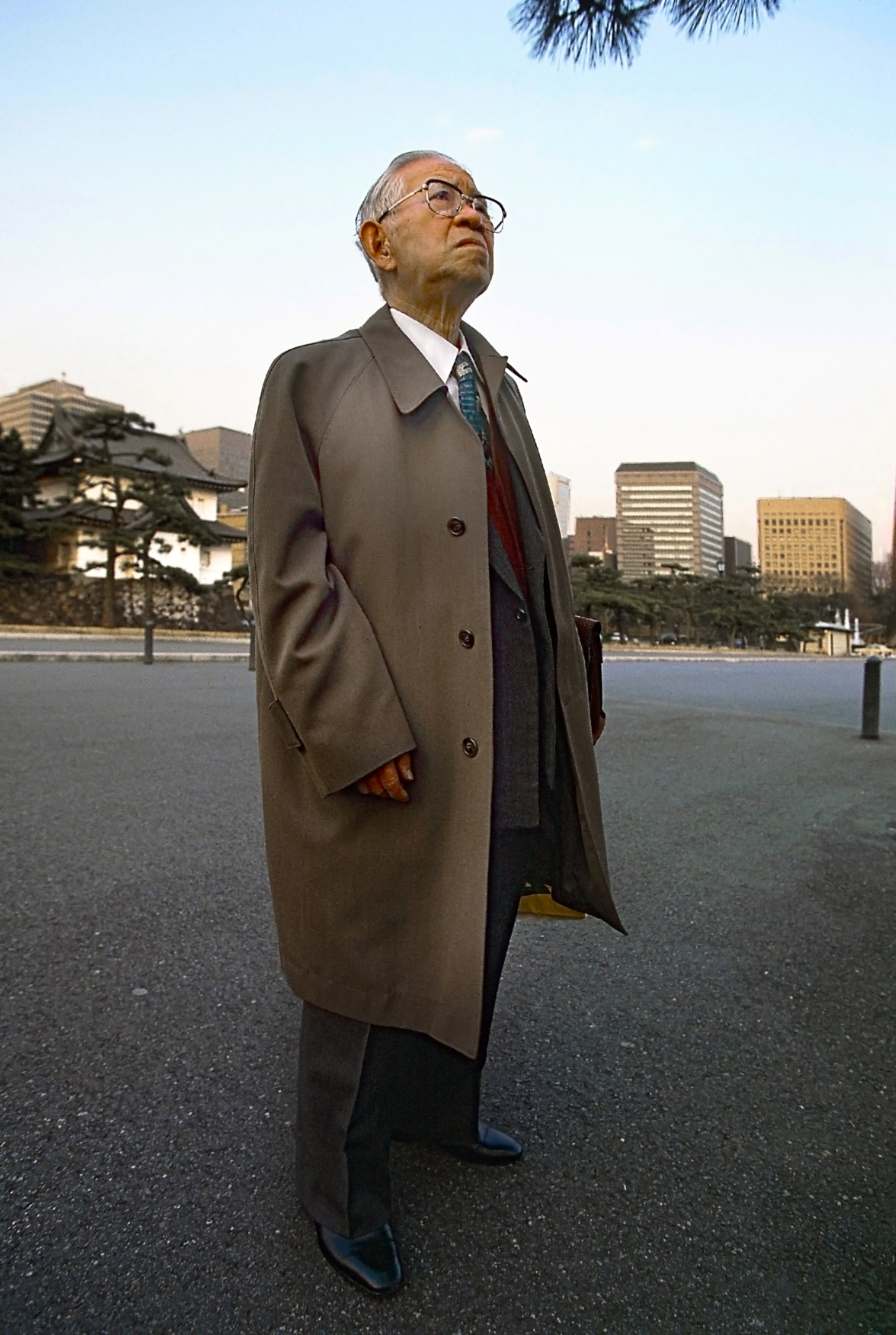
|
Vem är den japanska mannen på bilden? Jag satt mig efter en lång dag i Tokyo och vilade i kejsaren trädgårdsparken. Mannen kom och begrundade trädet bredvid mig. Han har en brun trenchcoat. Han påminner mig om farfar eller ser ut som arkitypen av en äldre man som har en stor del av sitt liv bakom sig. Det är allt jag vet om honom. Bilden skildrar en tillstånd och ställer mer frågor än svar. Han gick sin väg men jag tog två bilder som minnet av ett kort möte i ett ögonblick i januari 2001. "Canned Thought or three days with a man from Japan". Text by Roman Mitch. First I heard an artist say recently: “All of my work comes from, or is enacting a kind of boredom. Not just a waiting-for-the-bus kind of boredom, but an utter-dissatisfaction-with- my-existence boredom.” There’s something very funny about this, but it shouldn’t be taken as a joke. Why else is art the perfect form for opening up a space for enacting “utter dissatisfaction”, other than the fact that the very ground from which it seeks to separate itself (i.e. our everyday, common sense horizon of understanding), is exactly the thing which says to us: enjoy yourself!? Let me repeat the question in this specific frame. What is it that gives Michel Thomas the impulse to say this is art to a photograph, which enacts dissatisfaction? While it is the photographs which he takes of people enjoying themselves which are negated as art? The obvious answer is that the former photographs, those not selected as art are in fact commercial, contracted work. That is, Michel Thomas has only limited creative control, therefore it is not his art. But I think we should risk the assumption that commercial viability is secondary to the imperative to enjoy. second What is the body of photography? The technical/historical development might mislead us. Because photography is not just the technological advancement of a means of reproduction, but it is the medium through which we have come to know ourselves transformed, captured into an object. In this sense it was Medusa who was the first photographer, and it is statues that are the first photographs. So it is quite logical that Michel Thomas talks about Rodin when talking about his photographs. It is neither a slick re- appropriation of, or a simple attempt to connect to an established artist. Rather, Michel Thomas acknowledges photography’s non-technological lineage, a lineage of theater and sculpture. But what is the play? third Let’s make machines to do it. This idea takes on a strange resonance when machines are made to engage with our feelings. Think about canned laughter. It isn’t just a cue - laugh now. It also says: laugh if you want, but if you don’t we’ve already arranged a back up, so you can relax. You don’t even have to feel anything. On comedy TV shows, why is it that the unfortunate characters are so essential? Is it because we are sadistic, and enjoy other peoples misfortune, or is it that they enact misfortune so that it will not come onto us? Thereby allowing us to enjoy the show, and perhaps our life. It is as if we have a spectrum of emotion, which has to be played out, as a necessity. But it is much better to keep certain things in fiction. Then they are machines for enacting the feelings of life for which we do not have the occasion for. This is not a judgment on television, toward the end of somehow liberating the differences of photography the finer art. Photography too is a desiring-machine. That is desire flows through its parts. It is very much in the business of creating characters, touching our emotions and creating effects. The proper questions are - Where has it coupled itself, into what kinds of chains of feelings and emotions is the photograph a part of? As we can see it has, among other things connected itself into art discourse. In this discourse at least, I know, our desire has turned toward the kind of objects, which denounce the imperative to enjoy and open up a space for us to be dissatisfied. Here we are allowed not to be impressed. We are expected not to enjoy the spectacle. If we are lucky we may find that somehow in the creation of this new distance the objects have a new way of speaking to us. extra Is it becoming like canned disappointment? Is it our cultures way of arranging a synthetic backup so that we can avoid genuine disappointment? Will art writing become the art world’s canned laughter? |
| All rights reserved © Michel Thomas |